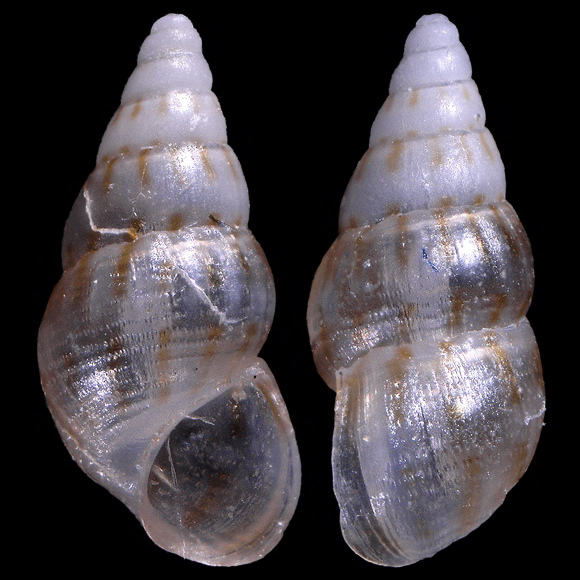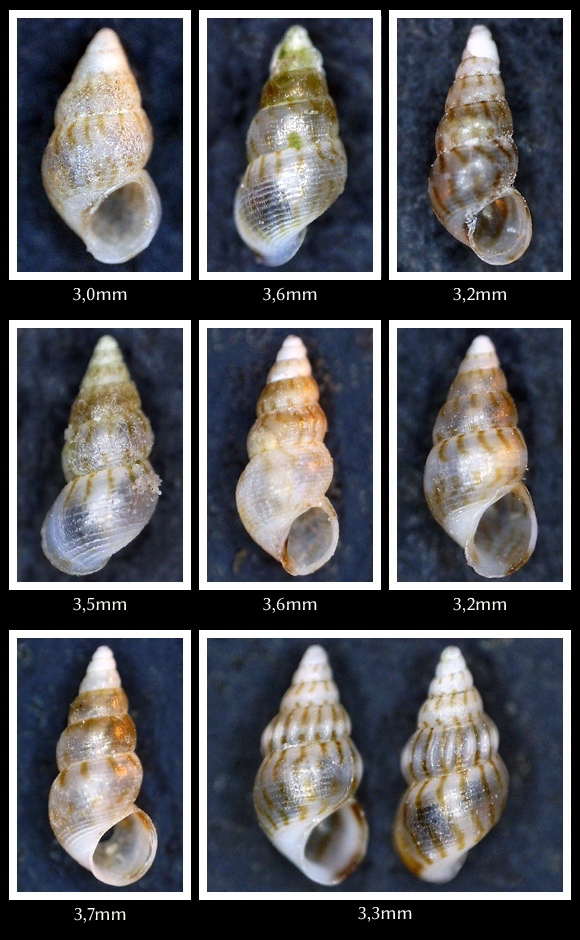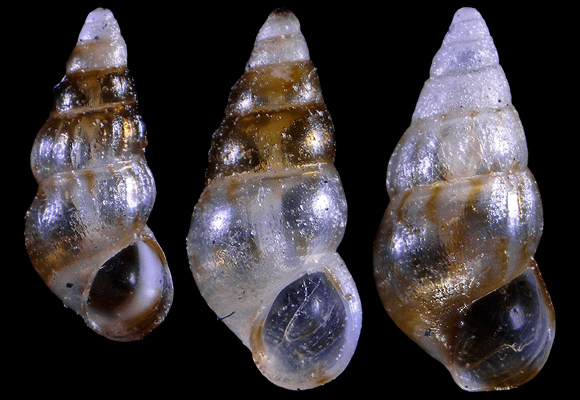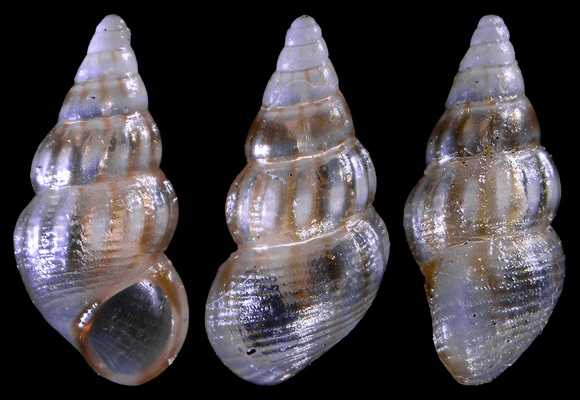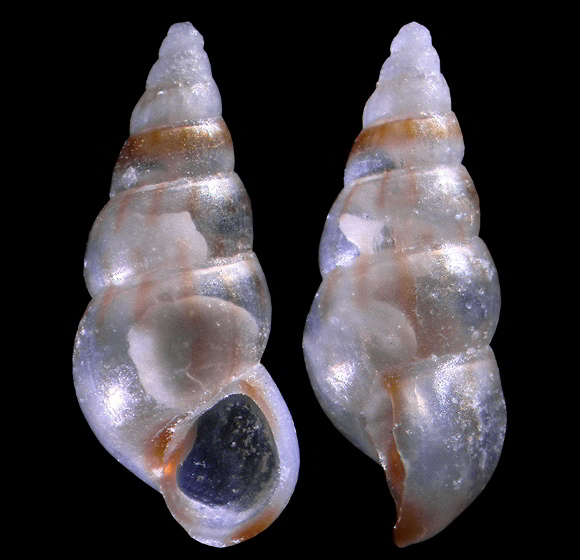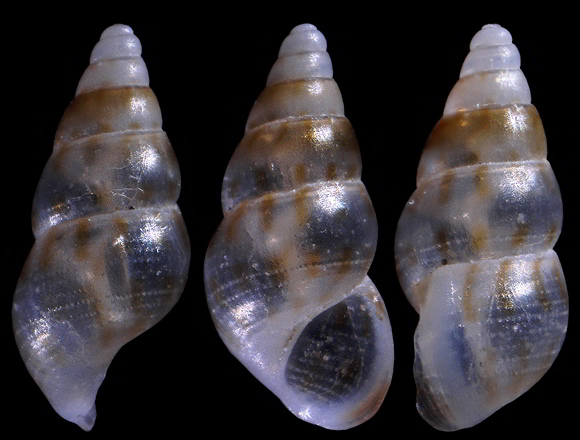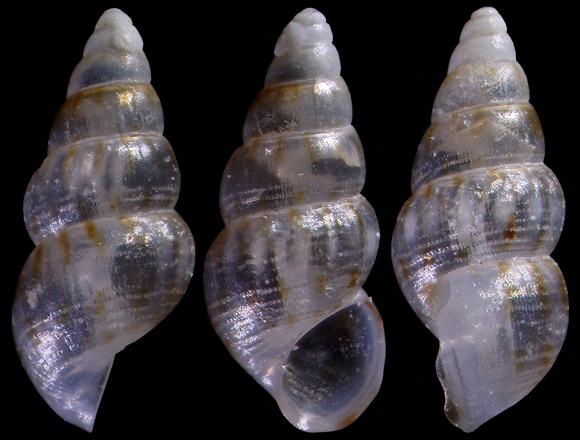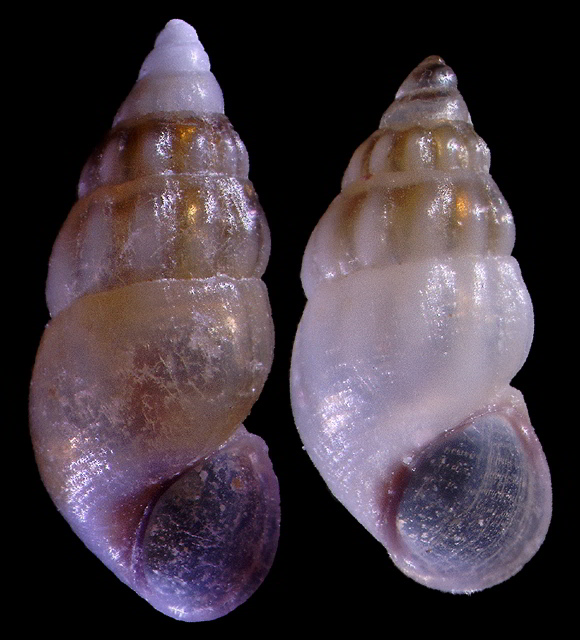– second part –
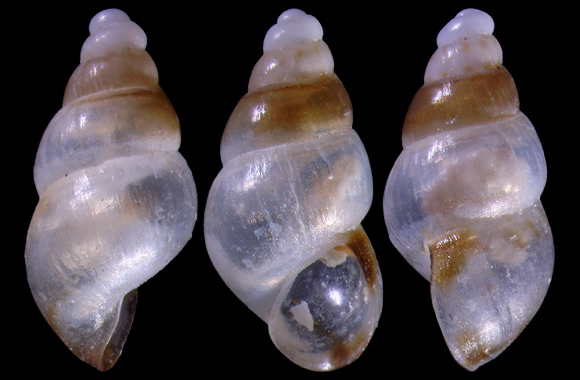
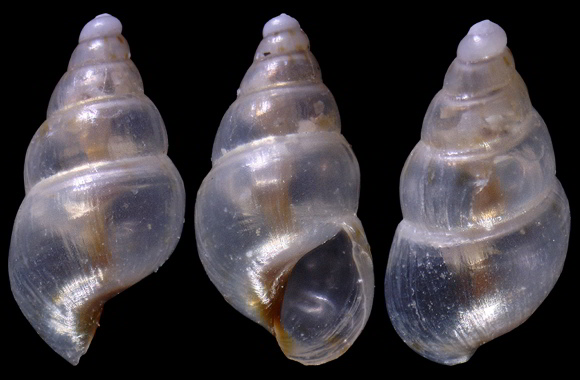
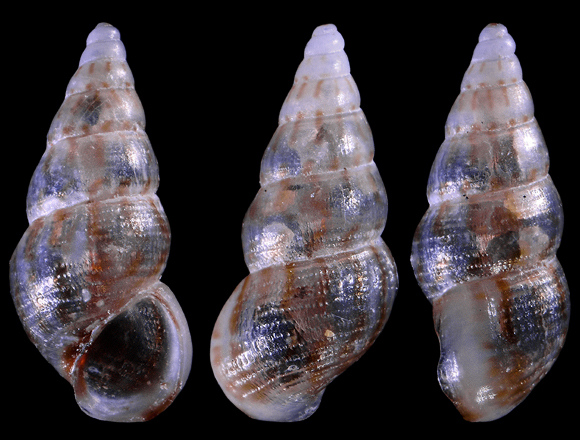
Verduin: « The lower two or three whorls of the great majority of the shells are uniformly covered with punctate spiral striae, which also cover the base of the shell. In ribless shells this sculpture may be weak or absent. Such shells may be easily mistaken for R. parva forma “interrupta” (Adams,1798). »
Ghjunchitu Bay, Isola Rossa. 3,2mm.
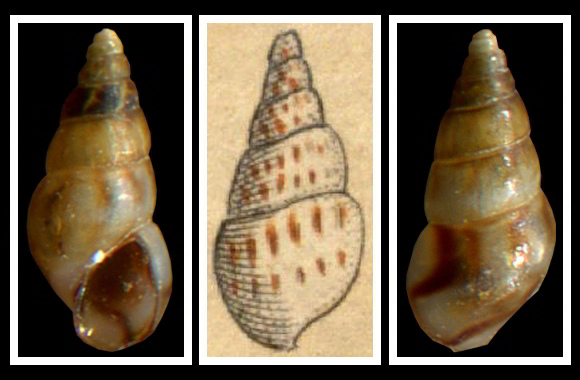
Left and right: young Rissoa parva (da Costa, 1778) from Keremma, N. Finistère, NW. Brittany, NW. France. original pictures provided by R. Huet (FR) for AnimalBase. Center: the Turbo interruptus as it is drawn in Adams, plate 1, fig.16. Adams gives the following description: « Shell glossy, pellucid, white, imperforated; spires with interrupted longitudinal bands of a rich ochreous colour. » – J. Adams: “Descriptions of some minute British Shells”, Transactions of the Linnean Society of London vol. V, London 1800, p.3. Adam’s description matches that of Verduin’s ribless similis.
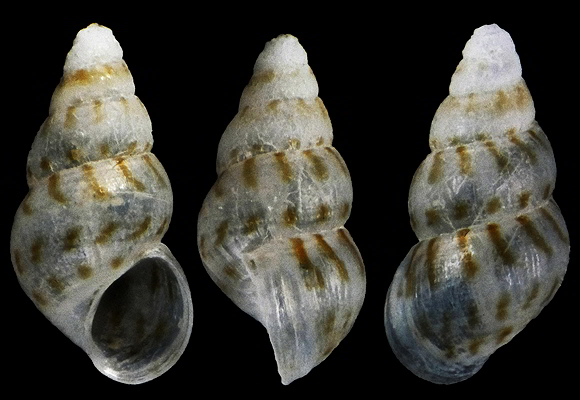
Some features that can be noticed in this form: shell conical, almost smooth, without marked longitudinal folds or bumps; apex obtuse; first teleoconch whorls rather flat, opaque, white, progressively becoming more convex and “pellucid”; suture marked, thin, and not undulated as in ribbed specimens; sculpture made up of obsolete spiral striae crossed by weak radial growth-lines. Pattern of longitudinal interrupted brownish lines.
Beach drift, La Franqui, Leucate, Occitania, S. France. 1,9mm. Original pictures provided by S. Clanzig (FR).
– (CC BY-NC-SA) –
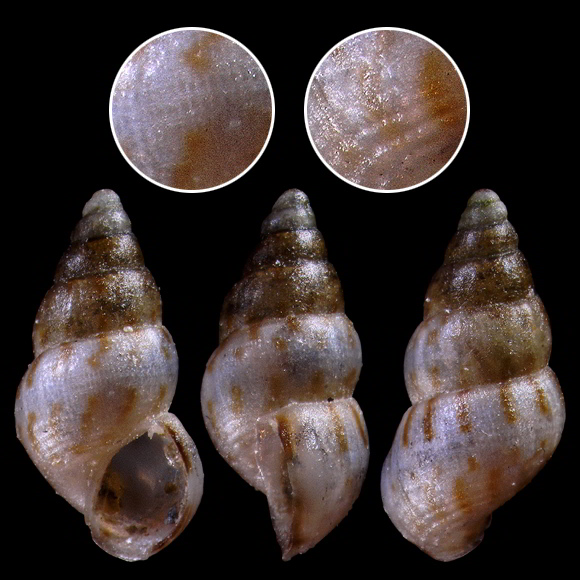
In this form, the shell, more or less slender, is often adorned with suprasutural and subsutural flamules. Generally weak and thin, almost obsolete in some specimens, the spiral striae become stronger near the suture and at the base. Anse Bernardi, Port-Vendres, Eastern Pyrenees, S. France. 2,75mm.
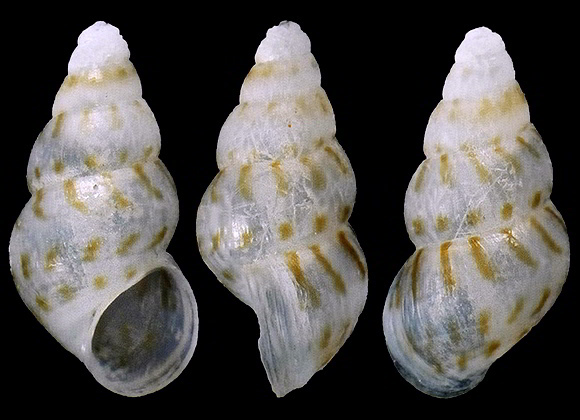
The flamules, often prosocline below the suture, are always opisthocline above; on the last whorl, the supersutural row of flamules appears, after having passed above the aperture, divided in two rows of shorter markings.
Beach drift, La Franqui, Leucate. 1,9mm.
Original pictures provided by S. Clanzig (FR).
– (CC BY-NC-SA) –
